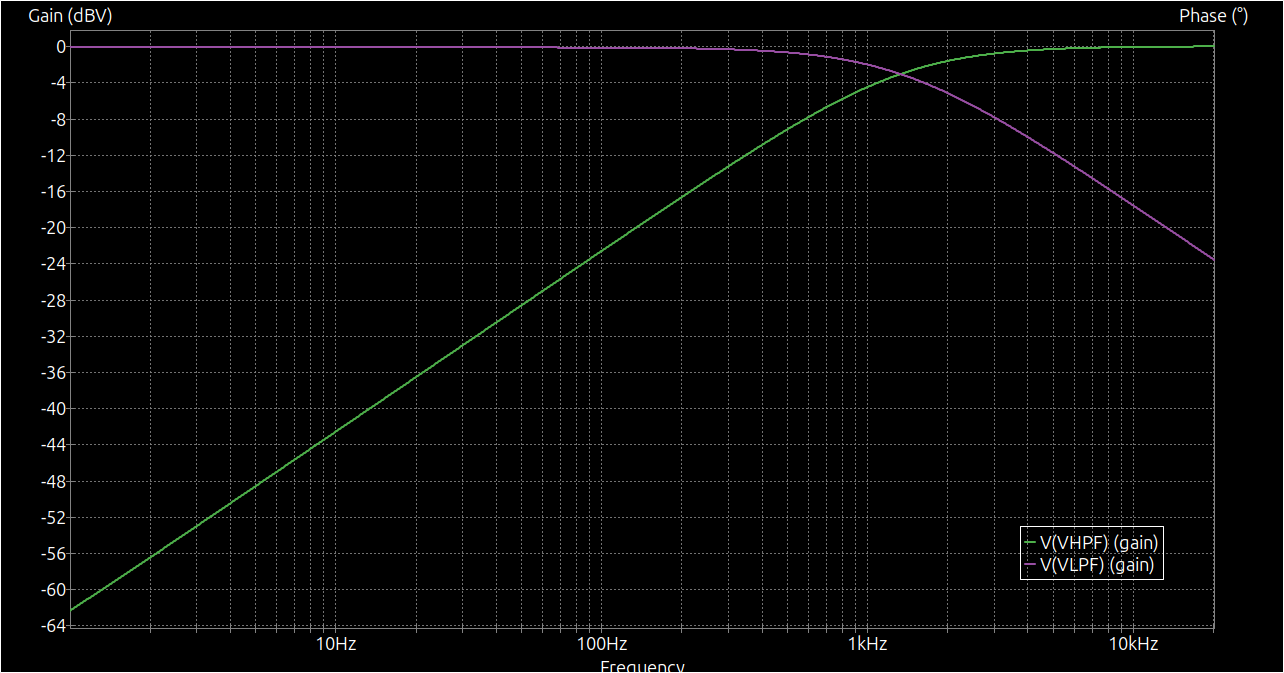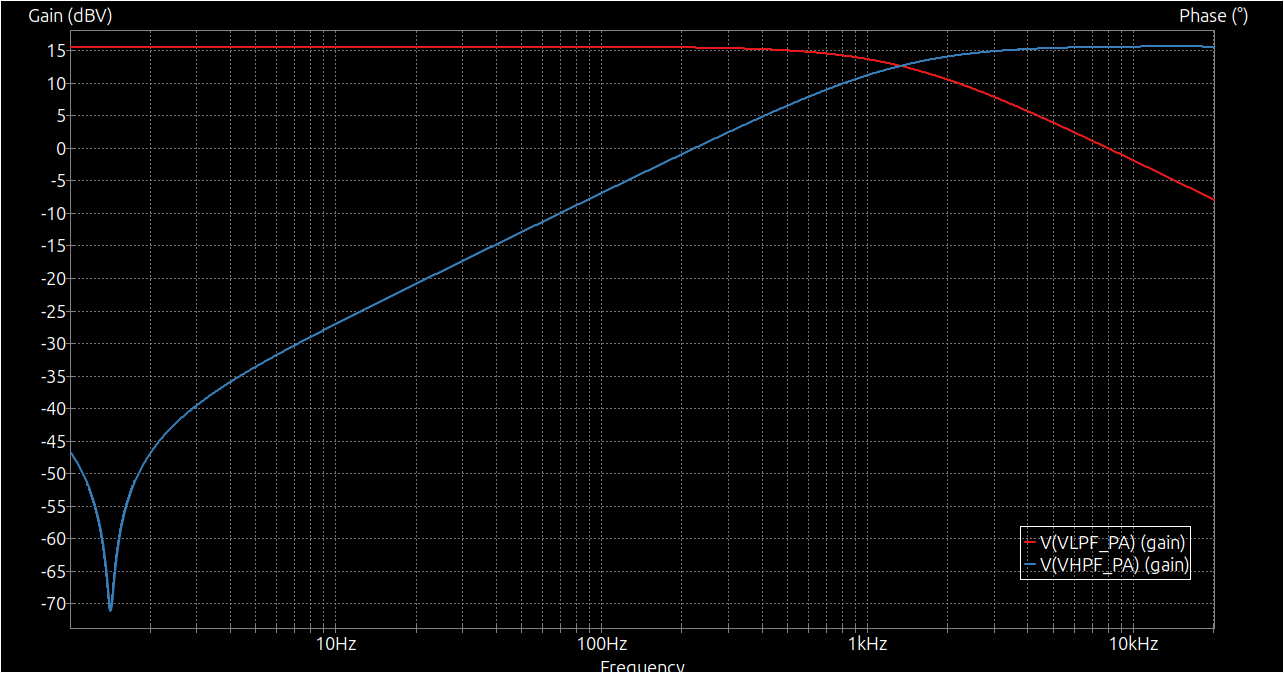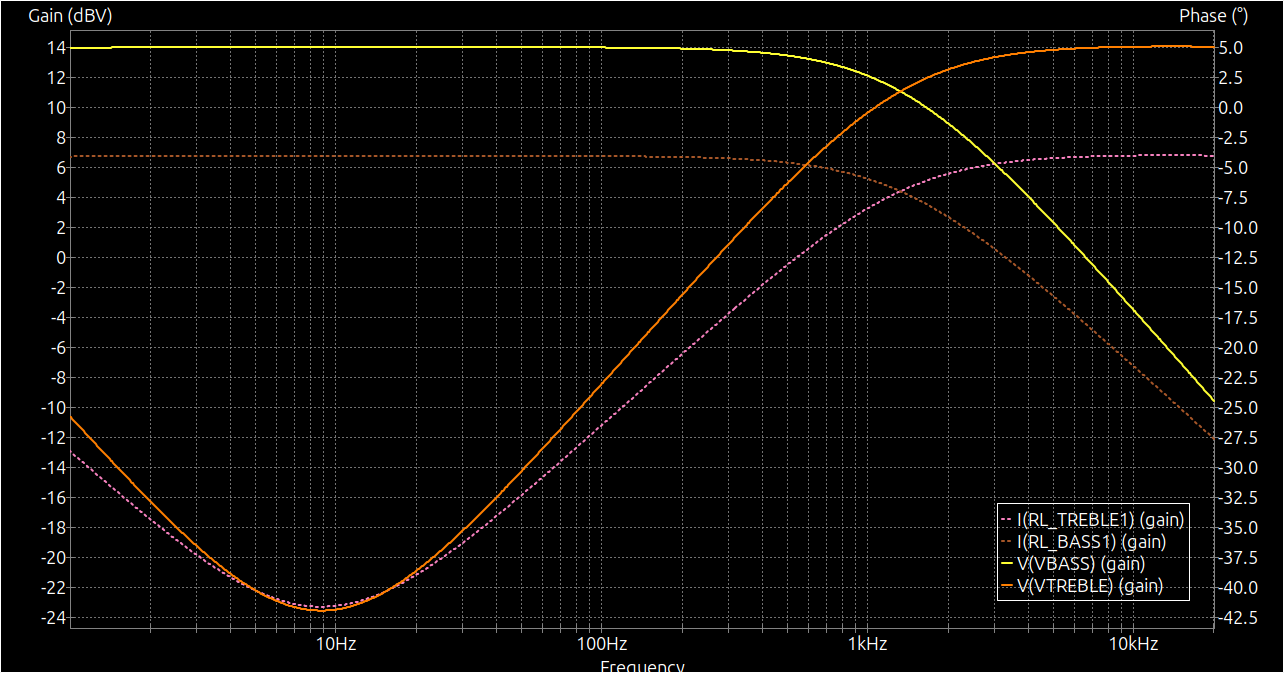This is a simple analog speaker driver, mostly driven simply by the goal of learning more about this field.
The driver is designed to support two drivers, one for bass and one for treble. The cross-over frequency is 1326 Hz, and is achieved by using simple first order filters.
- Capacitor: 10 uF
- Resistor: 12R
The input voltage is amplified by a factor of 6, using a simple non-inverting amplifier (LM741 op-amp). It is expected that the input voltage is around 1 V amplitude (2 Vpp), delivered by a 3.5 mm audio connector.
- Input resistor: 820R
- Fixed feedback resistor: 10k
- Variable feedback resistor: 10k (in parallel with the fixed resistor)
The next stage is a power amplifier, which is a simple class AB amplifier, that allows each driver to draw up to about 5W. Each driver is expected to have an impedance of 4 Ohm. TIP31 and TIP32 power transistors are used.
The PCB takes a single 24VDC 1A barrel jack input, and divides the voltage into 12VDC and -12VDC using a simple voltage divider.
- Miniaturize the PCB, using at least SMD components, if not a pre-made amplifier IC.
- Understand, measure, and reduce the signal-to-noise ratio.
- Use dedicated battery control circuitry for portable use.
- Add Bluetooth connectivity (ideally BLE), using a microcontroller.
- Ideally, use custom firmware and design a custom antenna on the PCB.
- Alternatively, use an ESP32 module with a pre-made antenna.
- Use buttons for power on/off, volume control, and Bluetooth pairing.


